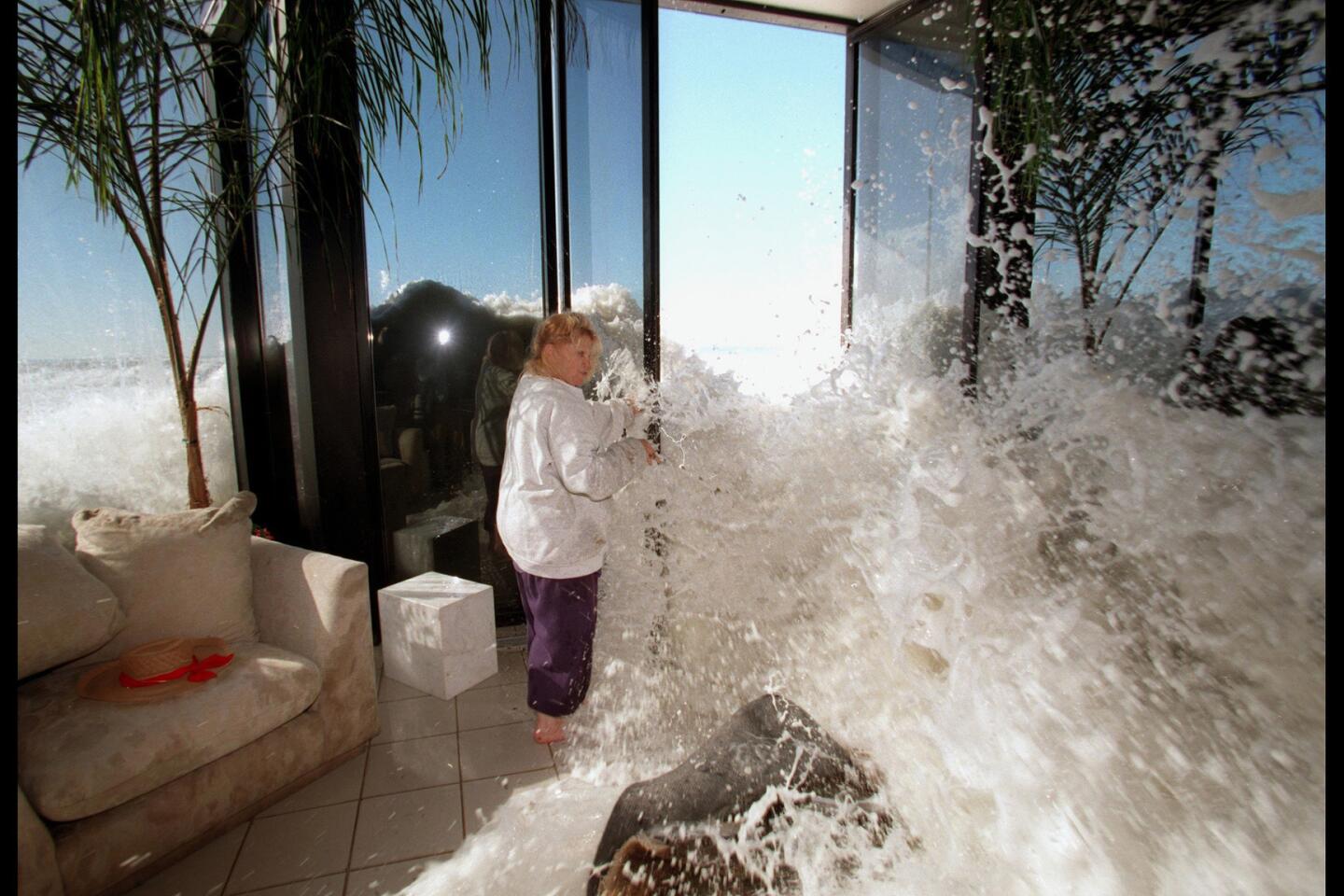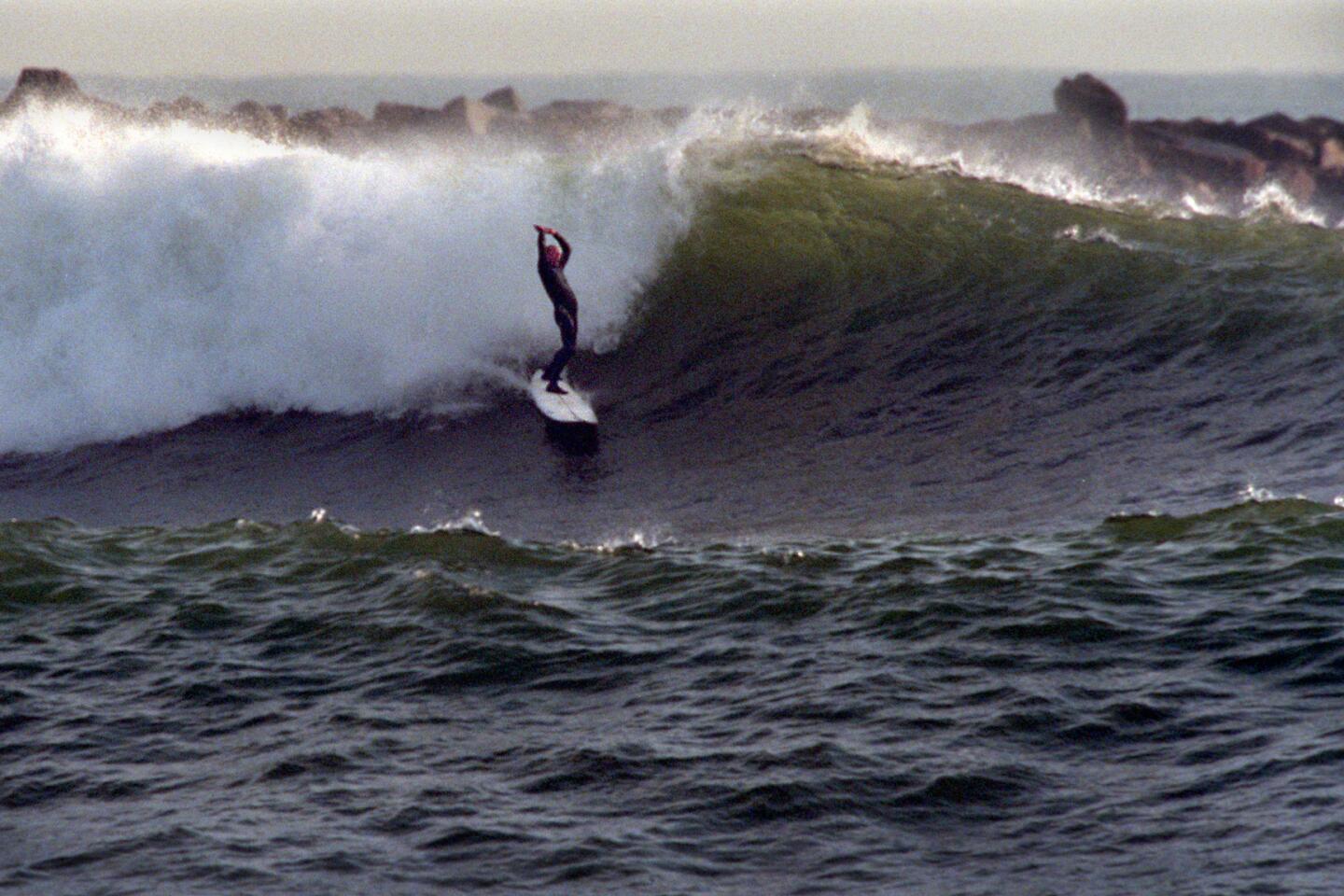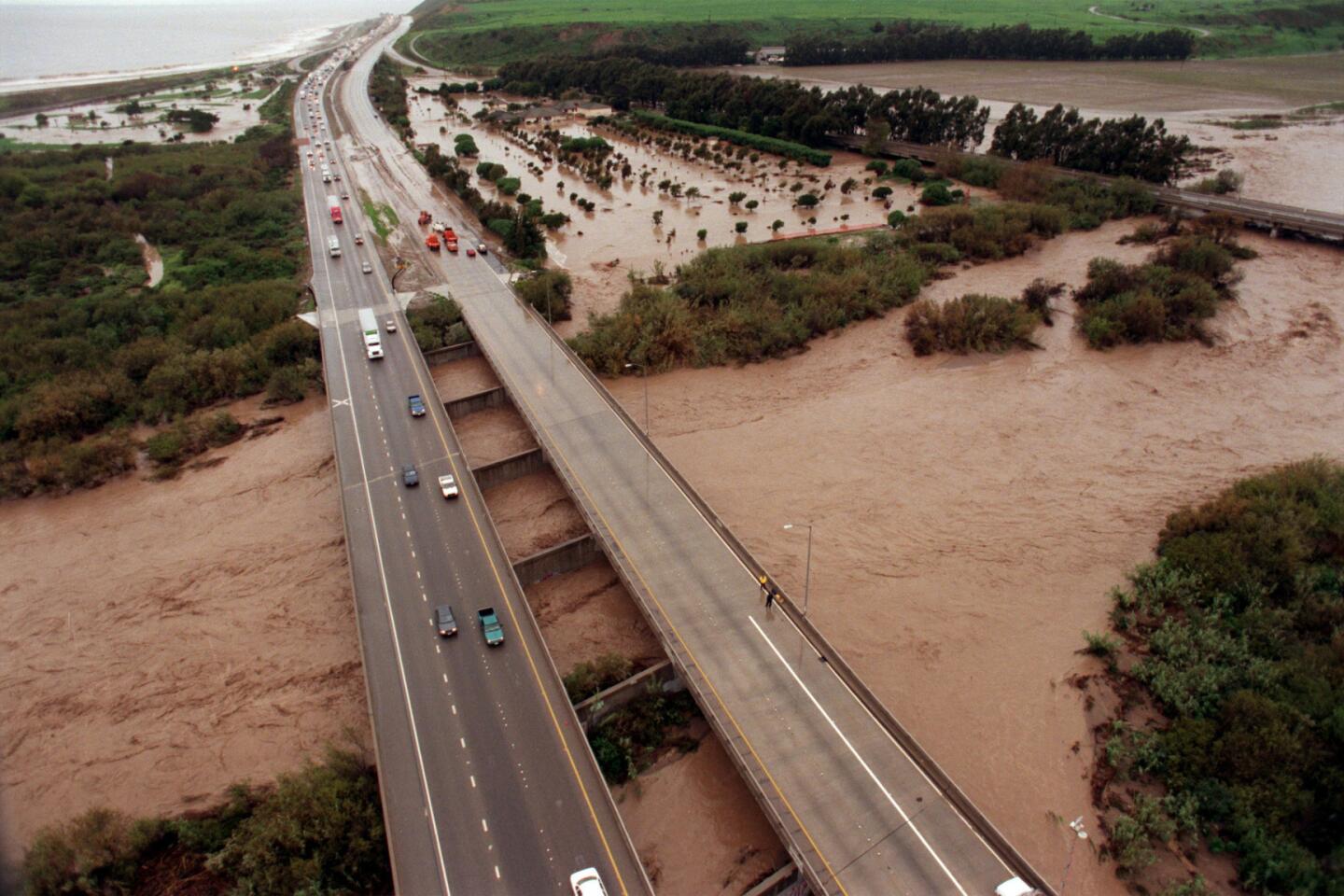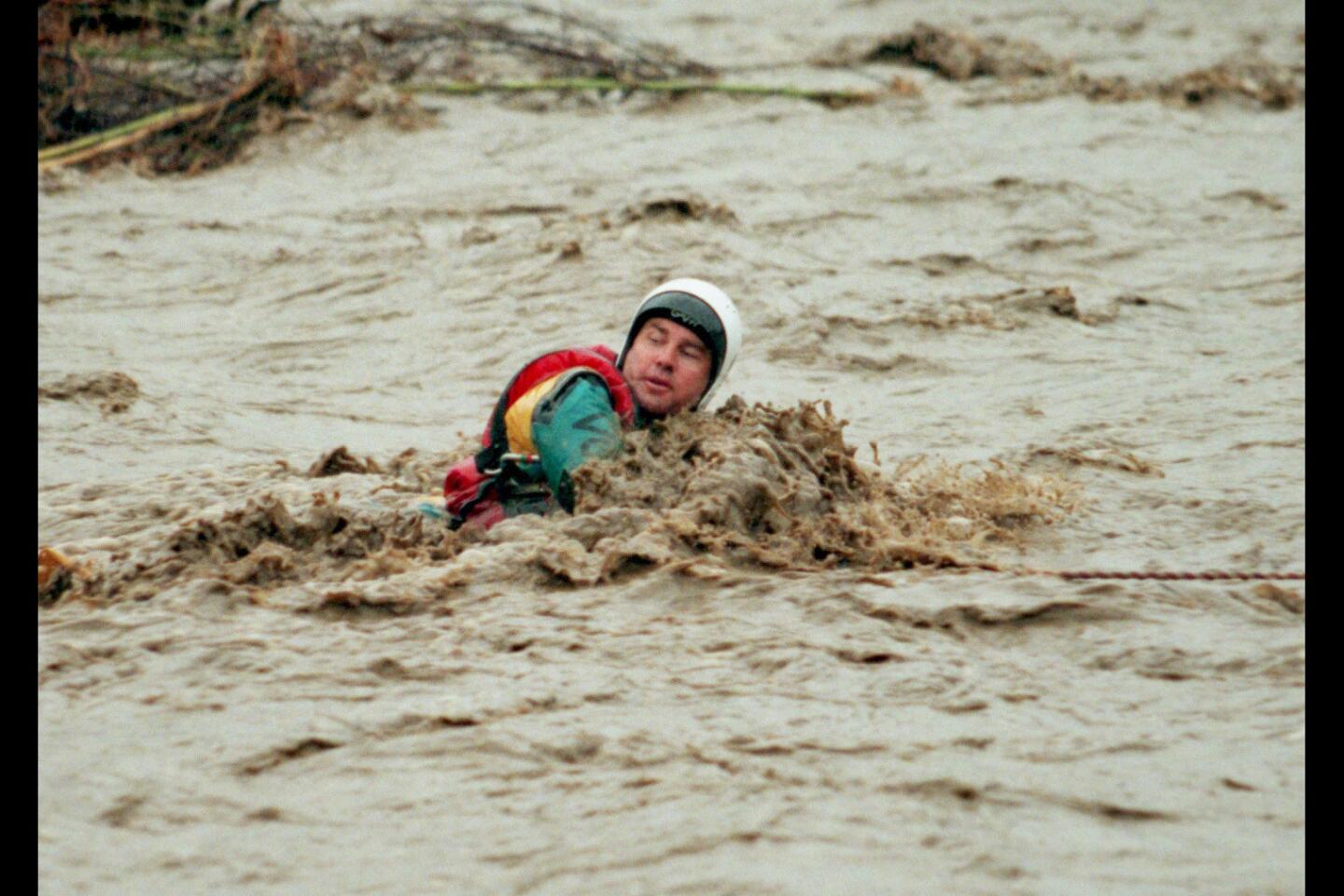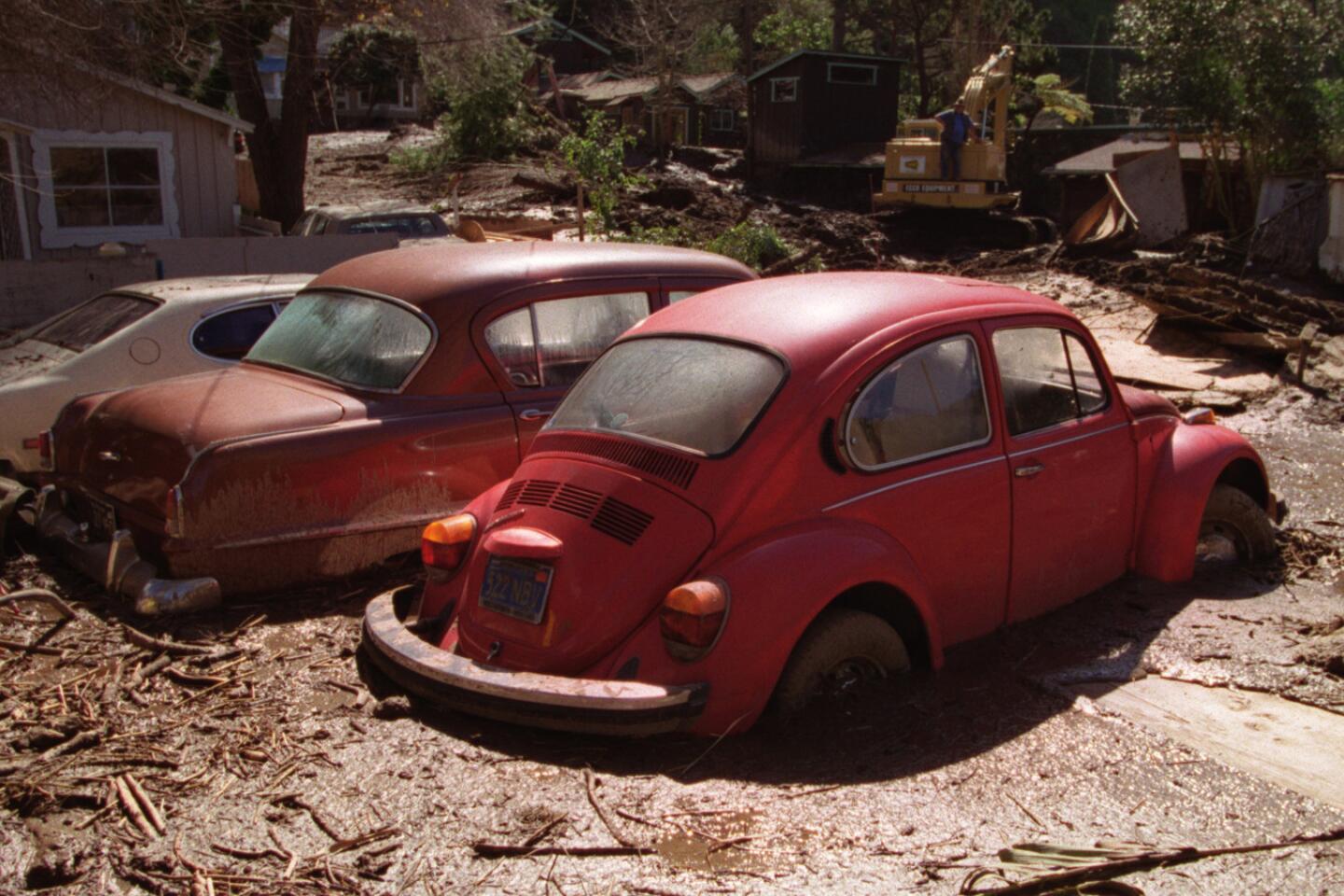El Niño is here, and it’ll be ‘one storm after another like a conveyor belt’
- Share via
The strong El Niño in the Pacific Ocean is becoming even more powerful, setting the stage for an unusually wet winter in California that could bring heavy rains by January, climate experts said.
The National Weather Service’s Climate Prediction Center said El Niño is already strong and mature, and is forecast to continue gaining strength. This El Niño is expected to be among the three strongest on record since 1950.
“It’s official. El Niño’s here. It’s a done deal,” said Bill Patzert, climatologist for NASA’s Jet Propulsion Laboratory in La Cañada Flintridge. “So at this point, we’re just waiting for the impacts in California.”
Water and Power is The Times’ guide to the drought. Sign up to get the free newsletter >>
Generally, El Niño doesn’t peak in California until January, February and March, Patzert said. That’s when Californians should expect “mudslides, heavy rainfall, one storm after another like a conveyor belt.”
“January and February are just around the corner. If you think you should make preparations, get off the couch and do it now. These storms are imminent,” he said. “El Niño is here. And it is huge.”
On Nov. 4, sea surface temperatures in a benchmark area of the Pacific Ocean west of Peru hit 5 degrees above average, outpacing the abnormally warm temperatures seen at this time of year in 1997, which developed into the strongest El Niño on record.
El Niño has already caused major effects across the world, fueling an active and unusually powerful hurricane season in the eastern Pacific Ocean, including Hurricane Patricia, which hit Mexico last month.
FULL COVERAGE: Preparing for El Niño
Chile, home to one of the world’s driest deserts, is now blooming with flowers from unusually high rainfall. But in other regions, El Niño means drought, which is already being reported in Indonesia and the Philippines. Earlier this week, the United Nations Children’s Fund warned that “11 million children are at risk from hunger, disease and lack of water due to El Niño in eastern and southern Africa alone.”
On Thursday, the United Nations warned that more than 2 million people in Central America will need food aid due to a drought worsened by El Niño, which has caused significant failure in crop harvests. The storms that usually keep the jungles of southern Mexico and Central America wet shift northward to California and the southern United States during strong El Niño winters.
Last month, the Climate Prediction Center forecast above-average precipitation for much of California between January and March.
Northern and Central California are already seeing a start, even before winter begins. A series of storms this week has left a large part of the Sierra Nevada with a blanket of snow; about 36 inches of snow was dumped on Mammoth’s summit in just two days.
Patzert, the climatologist, cautioned that December could seem quiet, with California getting what he called the “December lull.”
Patzert said one of the upsides in the forecast is epic surfing. Past El Niños have brought winters that went down in surfing history, and “it was one great set after another,” he said.
“But the other side of epic surf is battered beach communities. That’s the flip side of it. The epic surf years also meant that beach communities were battered from Northern to Southern California,” he said.
Follow us for the latest news in earthquake safety, El Nino, and the drought: @RosannaXia and @ronlin
ALSO
Inca boy’s DNA shows how humans spread to South America
College students confront subtler forms of bias: slights and snubs
Claremont McKenna dean resigns after students protest campus racial bias
